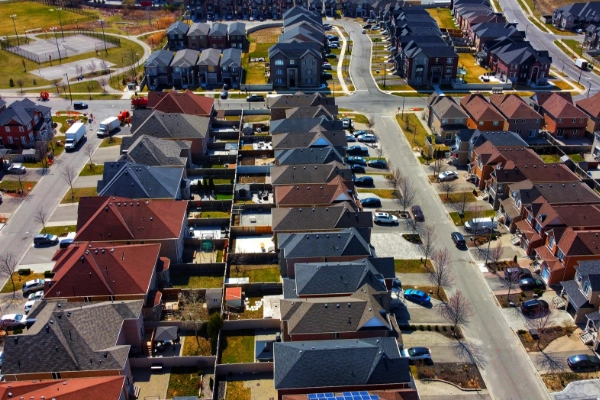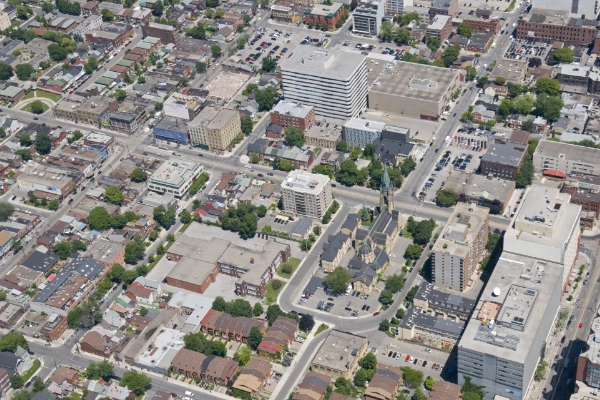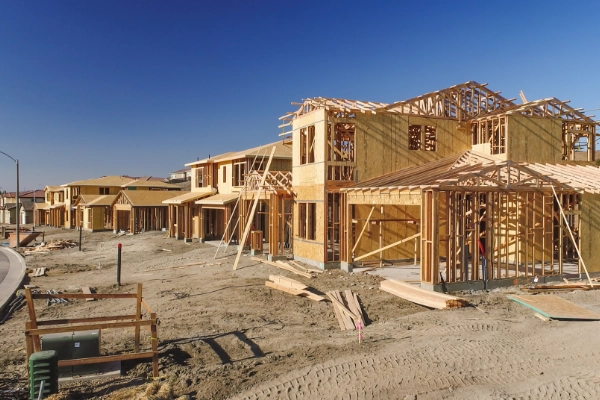2024 Market Outlook and 2023 Year in Review
Taking Action:
Housing, Unaffordability & the Social Impact

2024 Market Outlook
Upcoming Trends for Home Sales & Average Prices
Hear what TRREB’s Chief Market Analyst Jason Mercer has to say about the demand for housing in 2024.
What’s Next for Interest Rates
Tune in for an outlook on interest rates and how rate hikes are impacting buyers’ housing choices.
Renting in the GTA
Learn why affordability pressures in the homeownership market drove higher rental prices and increased competition for rental units.
Consumer Polling Results

Buying & Selling Intentions
Discover five things you need to know about the likelihood of people looking to buy or sell, plus more info on down payments. Get all the insights from TRREB’s latest buying and selling intentions survey conducted by Ipsos.

37%
The number of homeowners likely (very likely or somewhat likely) to list their home for sale in 2024
declined two percentage points over 2023.
14%
Those who indicated they were very likely to list
dropped by four percentage points when compared to our last survey with Ipsos.
28%
The share of likely homebuyers for 2024
remained the same as the 2023 results.
21%
Respondents who immigrated to Canada in the past ten years
indicated that they were very likely to purchase a home in 2024.
32%
The average intended down payment
for a home purchase in 2024.
Solutions

Building more affordable housing begins with identifying the obstacles that are holding us back.
However, band-aid solutions often result in larger issues than the problems they are attempting to solve. Simply put, the current taxes and fees on housing don’t help the affordability crisis our region is facing. Land transfer taxes can act as a barrier for homeowners who want to relocate, and increased taxation may sideline would-be first-time homebuyers from entering the market at all.— John DiMichele
TRREB CEO

The population of the GTA is steadily on the rise.
To build a balanced market with more attainable homes, prioritizing “missing middle” housing will provide more diverse and affordable housing options. This will enable builders to create multi-family housing units and purpose-built rentals that can be scaled up much faster than one-off development proposals.— Jennifer Pearce
TRREB President

Our government believes that everyone deserves a safe and affordable place to call home.
Part of this is increasing the housing supply to help lower the cost of housing and protect the dream of homeownership.— Right Hon. Justin Trudeau
Prime Minister of Canada

One of Canada’s primary economic advantages is our ability to grow our skilled workforce – both through domestic training and education as well as through the attraction of workers from around the world.
In order to maximize our economic potential, we have to make sure that we have the capacity to support people who grow up in our communities and people who choose to live in them.— Hon. Sean Fraser
Minister of Housing, Infrastructure and Communities

With economic opportunity and job creation spurring ever greater population growth across the Greater Golden Horseshoe, confronting our housing supply crisis has never been more critical.
That’s why Ontario continues to take action, together with our partners, to meet our goal of building at least 1.5 million homes by 2031.— Hon. Paul Calandra
Minister of Municipal Affairs and Housing

Now, more than ever, there is an urgent need to build infrastructure for the future due to unprecedented growth across our province.
As part of our plan to build at least 1.5 million new homes by 2031, we are seizing a once-in-a-generation opportunity to build vibrant, mixed-use communities around transit stations across the Greater Golden Horseshoe.— Hon. Kinga Surma
Minister of Infrastructure

Torontonians are relying on the City to urgently address the housing crisis.
That’s why I’ve brought forward a transformative plan to build more rent-controlled market, below-market and rent-geared-to-income rental housing. My plan focuses on coordinating all city departments to pull in the same direction towards our goal of building more, faster.— Olivia Chow
Mayor, City of Toronto
Year in Review: 2023 Market Stats
Get a glimpse of the 2023 Greater Toronto Area (GTA) real estate market in 2023.
Discover insights on home sales, new listings, average prices, and more.

65,982
Total Home SalesThe number of GTA home sales in 2023 was 65,982. More buyers are taking a wait and see approach before re-entering the market due to affordability issues brought about by high mortgage rates. Home sales were down 12.1 per cent compared to 2022.
142,233
New ListingsThe trend for listings has been largely flat-to-down over the past decade, which is problematic in the face of a steadily growing population. The number of new listings in 2023 was 142,233, down 8.63 per cent compared to 2022.
$1,126,604
Average PriceThe average selling price for all home types in 2023 was $1,126,604, representing a 5.4 per cent decline compared to 2022. As more prospective buyers were faced with higher mortgage rates, home selling prices edged lower.
$1,463,973
Average Price for DetachedThe average selling price of a detached home was $1,463,973, down 5.4 per cent compared to 2022. Buyers who were active in the market benefitted from more choice throughout 2023. This allowed many of these buyers to negotiate lower selling prices, alleviating some of the impact of higher borrowing costs.
$1,115,204
Average Price for Semi-DetachedSimilarly to detached homes, the average selling price of a semi-detached homes in the GTA adjusted to higher borrowing costs. The average selling price of a semi-detached was $1,115,204, down 5.7 per cent compared to 2022.
$717,807
Average Price for CondosSales in the condo market were slower in 2023, as some first-time buyers moved to the sidelines due to higher borrowing costs or shifted to the rental market to meet their housing needs. The average price of a condo was $717,807, down 5.3 per cent over 2022.77,000
home sales in 2024
Preparing for Rising Immigration, the Demand for Affordable Rentals and Ownership Housing

The lack of housing supply and affordability challenges are growing in Canada.
While rising immigration plays a role in this complex issue, the root causes of Canada’s unaffordable housing go far beyond population growth.

Although immigration contributes to housing demand, Canada’s aging population depends on immigrants to fill job vacancies and promote economic growth.
This is essential for expanding the tax base needed to support the aging population. Canada’s population now has a larger share of people aged 55 to 64 than those aged 15 to 24, indicating the urgency of addressing the skills shortage. According to the EllisDon Corporation, by 2029, we will be short about 100,000 tradespeople.

More immigration can bring significant benefits, but government immigration policies must include a plan to ensure that newcomers have places to live that are affordable, close to jobs, and a community that helps them settle and integrate.
This must include further investment in emergency resources to help house refugees in Toronto and other major cities. This approach is essential to manage Canada’s skills shortage and bolster its aging population.

It’s clear that striking the right balance between immigration and housing supply is essential for long-term economic resilience. While immigration is a part of the equation, the broader housing ecosystem needs transformation.
Canada’s aging population and the imperative for economic growth have led to an increased reliance on immigration as a crucial tool for sustaining our skilled labour force and shoring up our tax base amid declining population trends.

It’s not just about welcoming new Canadians, but also about maintaining the health and sustainability of our housing market.
The solution doesn’t rest solely on immigration; it requires a multi-faceted approach, spanning government support for skilled immigrants, the removal of barriers to housing development, and incentives to boost construction and renovation. These measures are vital to ensuring that the Canadian housing market remains a resilient and attractive investment prospect for businesses and individuals.
CANCEA Research
Locked Out: The Social Value Cost of the GTA’s Housing Crisis
Households spending more than 50% of their income on housing experienced a lower well-being score – comparable to some of the most significant health challenges faced by a society.Key Findings from the Commercial, New Homes & Condo Markets
Explore the commercial, new homes and condo markets with new research, plus discover an outlook for 2024, all from Altus Group. Learn where office market activity lies, how demand for industrial spaces is shaping up and how population growth will impact demand for pre-construction homes.

Office transaction activity declined in the GTA, with nearly three billion in dollar volume transacted through the third quarter of 2023. This is a 22% decrease year-over-year.
As the hybrid work model became an increasingly entrenched work arrangement amongst Canadians, tenants and landlords worked collaboratively to incentivize workers back into offices through amenitized space and rightsizing efforts. However, the office availability rate in the GTA increased to 18.1% in Q3 2023 from 15.9% when compared to the same period last year.

Market conditions for industrial sites remained strong as demand for modern facilities, specifically distribution centres and warehouses, continued to outpace available supply.
According to Altus Group’s Q3 2023 Canadian Industrial Market Update, Toronto’s industrial availability rate increased to 2.6% but remained the lowest in Canada.

The increasing demand for purpose-built rentals and modern industrial facilities, supported by strong demographic and economic fundamentals, is creating a robust and resilient real estate market in the GTA.
Overall, investment remains strong with the anticipated end of higher and possibly lower interest rates in 2024.

New condominium apartment sales bore the brunt of the slowdown in 2023.
As the cycle of rising interest rates and inflationary pressures took hold and worsened affordability in 2022, many buyers shifted to the more affordable new condos as a substitute, which helped to propel sales. But with affordability worsening in 2023, sales slumped in the new condos sector and delayed products.

Looking ahead in 2024, record immigration levels are adding to the backlog of buyers, and inflation has begun to fall back lessening pressure on the Bank of Canada to raise interest rates.
At the same time, provincial legislation continues to support increased housing levels. All that remains is for buyers to jump back into the market.